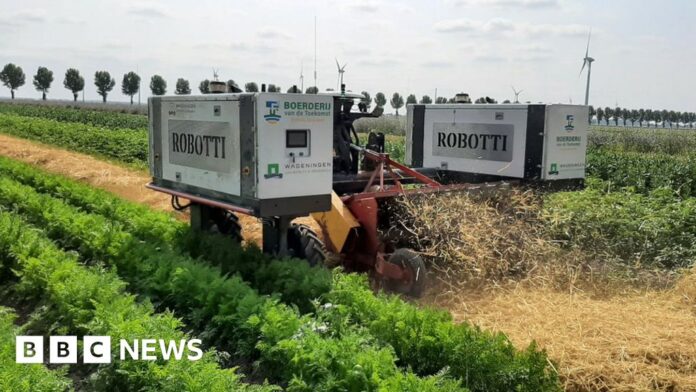I’m at the Wageningen University’s Farm of the Future, where I had been expecting to see robots and perhaps, drones flying overhead.
But on a bright blue day project manager Wijnand Sukkel stands in the expansive fields across from the university building with bare trees and of course, windmills in the background, and points at the strips of crops in the fields.
He says usually in the Netherlands these would just be filled by a monocrop such as maize or wheat.
Here in Leylstad, however, they’re experimenting with different agricultural methods including crop diversity, with eight different crops sown here at any one time including wheat, onions, potatoes, and broad beans.
“We know that crop diversity works,” says Mr Sukkel, who adds that they also use cover crops to help improve the soil and biodiversity. “It’s a more efficient use of water, it has lower risk of pest disease, it has a higher biodiversity, it’s better for the soil, and it gives higher yields.”


